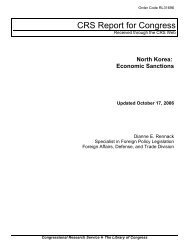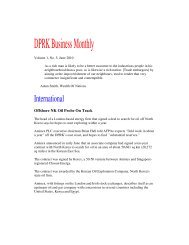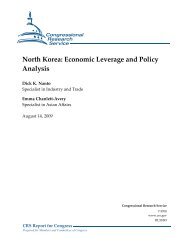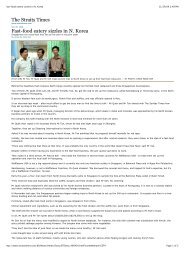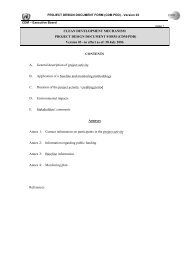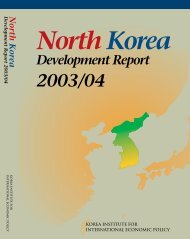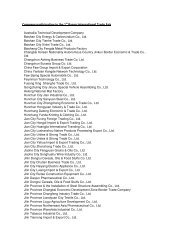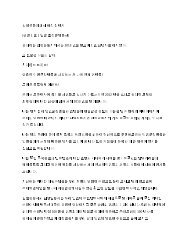North Korean Policy Elites - Defense Technical Information Center
North Korean Policy Elites - Defense Technical Information Center
North Korean Policy Elites - Defense Technical Information Center
You also want an ePaper? Increase the reach of your titles
YUMPU automatically turns print PDFs into web optimized ePapers that Google loves.
chance to unfold. In terms of system dynamics, this incident, unlike the 1968 rebellion, was<br />
directly aimed at the Kim family leadership. Thus, once again the factional politics in <strong>North</strong><br />
Korea had shifted from second echelon moves to garner influence to outright power grabs. This<br />
seems to be a symptom of transitional leadership in <strong>North</strong> Korea. When the Suryong is in full<br />
control, factionalism is restricted to the second echelon, but this can be transformed into<br />
warlordism when the system comes under duress at the top.<br />
Hawks vs Doves?<br />
Many western commentators on <strong>North</strong> <strong>Korean</strong> politics theorize about elite power<br />
struggles, with conservative, hard-line forces headed by military diehards intent on maintaining<br />
the status quo pitted against reformist elements calling for the introduction of chuche capitalism.<br />
Recent defector accounts, however, paint a rather benign picture of factionalism in <strong>North</strong> Korea.<br />
It is firmly ensconced at the second echelon of the leadership and is tied to various policy<br />
initiatives. From all indications, contrary to the opposition to the Kim Chong-il regime in the<br />
early 1990s, factionalism as it exists today is focused on garnering influence with the Suryong,<br />
not trying to depose him.<br />
This struggle for influence takes place in the policy-making process. Kim apparently<br />
encourages the system to analyze and vet issues and narrow options before passing policy<br />
initiatives up to him. An agency or ministry takes the lead on an initiative. It develops policy<br />
alternatives to particular (or changing) situations and methods for dealing with them. When<br />
cooperation with related agencies/ministries is required, consultation will take place with regard<br />
to strategies and tactics. Once an accord is reached, the initiative is forwarded to Kim Chong-il’s<br />
personal secretariat where it is prepared for his consideration. 29<br />
The territorial nature of the <strong>North</strong> <strong>Korean</strong> party and state bureaucracies can slow the<br />
leadership’s ability to react to outside overtures and rapidly changing events. Infighting and turf<br />
battles at the second echelon within institutions and between institutions can delay the<br />
convergence of views. And with the military’s influence growing, not just in the security arena,<br />
but in the foreign and domestic policy arenas, stumbling blocks in the decision-making process<br />
can arise in the NDC, where Kim presumably vets his decisions for leadership approval. 30<br />
29 Discussion with Kim Kwang-in, a reporter for NKChosun, who writes extensively on internal <strong>North</strong> <strong>Korean</strong><br />
politics. It has been reported that Kim’s office receives reports on current issues from each agency in the form of<br />
written documents, which are used to inform his decision-making. He then facilitates the process by rejecting<br />
them or approving them in the form of directives.<br />
30 Kim Chong-il and Ministry of Foreign Affairs personnel have complained to outsiders about the military’s<br />
interference in foreign affairs. Occasionally, the institutional debates surface in public documents, such as the<br />
MFA’s response to the U.S. revelation of its nuclear program in October 2002. The document, both conciliatory<br />
II-23



